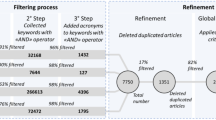Abstract
The manufacturing industry nowadays has a greater interest in reducing global warming and promoting energy-saving measures than ever before. This has led to the development of eco-friendly manufacturing systems to replace conventional ones. Additive manufacturing (AM) technology, for instance, is expected to contribute to reducing material costs and energy consumption. Unlike conventional material-cutting manufacturing processes, AM enables designs of any shape in manufacturing by adding the necessary parts layer by layer. Direct energy deposition (DED) is one of the many AM technologies available for a variety of commercial steel powders such as P20, P21, SUS420, H13, D2 and other Non-ferrous metal powders. The DED is process that can be applied to various industries, like molding, medicine, and defense. Of these, its application to the molding industry is the most practical, since the process can be used to deposit different materials on existing parts. Using this technology, it becomes possible to manufacture high-functioning parts composed of various materials at reasonable cost. In this study, the DED is used to develop a high-performance and environmentally friendly trimming die. In this study, to develop a high performance and environmentally friendly trimming die using DED, evaluation of mechanical properties of material developed, stress analysis in shear work. The commercialization of the developed technology was evaluated and the commercial application of the developed technology was discussed.
Similar content being viewed by others
References
Wohlers, T. T., “Wohlers Report 2016: 3D Printing and Additive Manufacturing State of the Industry Annual Worldwide Progress Report,” Wohlers Associates, pp. 33–81, 2016.
Kim, W.-S., Hong, M.-P., Park, J.-S., Lee, Y.-S., Cha, K. J., et al., “Case Studies on Applications of Conformal Cooling Channel Based on DMT Technology,” Journal of the Korean Society of Manufacturing Process Engineers, Vol. 14, No. 3, pp. 9–14, 2015.
Ahn, D.-G., “Direct Metal Additive Manufacturing Processes and their Sustainable Applications for Green Technology: A Review,” Int. J. Precis. Eng. Manuf.-Green Tech., Vol. 3, No. 4, pp. 381–395, 2016.
Seo, J., Lee, C., Woo, S., Kim, J., Kim, D., et al., “Application of DMT Technology for High-Performance Multi-Material Metal Part Fabrication,” A Research Paper, No. 1200513978, 2005.
Park, J. S., Lee, M.-G., Cho, Y.-J., Sung, J. H., Jeong, M.-S., et al., “Effect of Heat Treatment on the Characteristics of Tool Steel Deposited by the Directed Energy Deposition Process,” Metals and Materials International, Vol. 22, No. 1, pp. 143–147, 2016.
Park, J. S., Park, J. H., Lee, M.-G., Sung, J. H., Cha, K. J., et al., “Effect of Energy Input on the Characteristic of AISI H13 and D2 Tool Steels Deposited by a Directed Energy Deposition Process,” Metallurgical and Materials Transactions A, Vol. 47, No. 5, pp. 2529–2535, 2016.
Dahotre, N. B., Vora, H. D., and Boesl, B., “Additive Manufacturing via Surface Engineering,” JOM, Vol. 68, No. 7, pp. 1759–1761, 2016.
Amanov, A. and Pyun, Y.-S., “Wear and Adhesive Failure of Al2O3 Powder Coating Sprayed onto AISI H13 Tool Steel Substrate,” JOM, Vol. 68, No. 7, pp. 1793–1800, 2016.
Gebhardt, A., “Understanding Additive Manufacturing: Rapid Prototyping-Rapid Tooling-Rapid Manufacturing,” Carl Hanser Verlag, pp. 18–48, 2012.
Jhavar, S., Paul, C. P., and Jain, N. K., “Micro-Plasma Transferred Arc Additive Manufacturing for Die and Mold Surface Remanufacturing,” JOM, Vol. 68, No. 7, pp. 1801–1809, 2016.
Thompson, S., “Handbook of Mould, Tool and Die Repair Welding,” Elsevier, pp. 1–50, 1999.
Lee, K.-H., Choi, S.-W., Yun, J. G., Oh, M.-H., Kim, B. M., et al., “Microstructure and Hardness of Yb: YAG Disc Laser Surface Overlap Melted Cold Die Steel, STD11,” Journal of Welding and Joining, Vol. 33, No. 5, pp. 53–60, 2015.
Kim, Y. S., Park, K. C., Nam, J. B., and Lee, B. H., “Die Materials and their Wear Evaluation for Press Forming of High Strength Steel,” Transaction of Materials Processing, Vol. 24, No. 2 pp. 138–146, 2015.
Kacher, J., Landon, C., Adams, B. L., and Fullwood, D., “Bragg’s Law Diffraction Simulations for Electron Backscatter Diffraction Analysis,” Ultramicroscopy, Vol. 109, No. 9, pp. 1148–1156, 2009.
Cockcroft, M. and Latham, D., “Ductility and the Workability of Metals,” Journal of the Institute of Metals, Vol. 96, No. 1, pp. 33–39, 1968.
Author information
Authors and Affiliations
Corresponding author
Rights and permissions
About this article
Cite this article
Hong, MP., Kim, WS., Sung, JH. et al. High-performance eco-friendly trimming die manufacturing using heterogeneous material additive manufacturing technologies. Int. J. of Precis. Eng. and Manuf.-Green Tech. 5, 133–142 (2018). https://doi.org/10.1007/s40684-018-0014-9
Received:
Revised:
Accepted:
Published:
Issue Date:
DOI: https://doi.org/10.1007/s40684-018-0014-9




